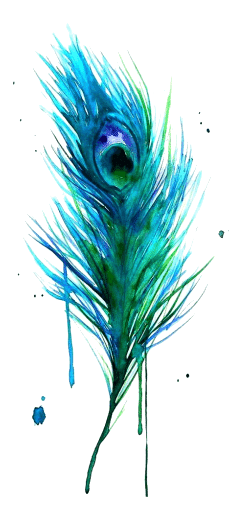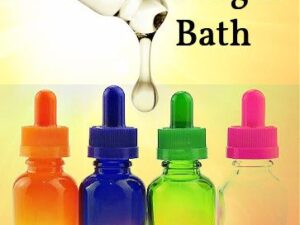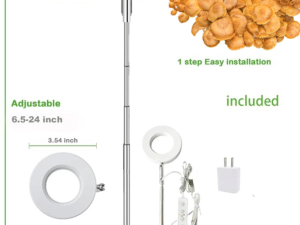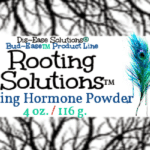Rooting Solutions™
$16.99 – $49.99
All-Natural Rooting Enhancer
4 oz. Jar of All-Natural Hormone Powder
Stem-Running Invasive Plants!
Don’t Forget A Power Pot™!, Plant Pendant™, & Perimeter Power Pucks™! Orgone May Enhance the Growth of Your Plants!
Share this:
Description
How To Use Rooting Powder:
- Cut just below stem nodes, at an angle.
- For soft & hardwood cuttings: Soak the stems in water for 24 hours.
- Carefully & safely scrape & remove any bark on the rooting end, using the sharp end of scissors or a knife.
- Dampen the rooting end of any cutting with sterile water, allowing all excess water to drip off.
- Dip the dampened end of the stem into the rooting powder.
- Tap the stem gently over the jar to release, and reuse, excess powder.
- Prepare planting holes with a tool, preventing smearing the powder.
- Stick the end of the stem into the soil and gently pat the soil at the base of the stem.
- Cover cuttings with a clear plastic, trapping in humidity, & recycling the water.
- Check root growth every 4 weeks, only water it if needed, & transplant it once the roots are established.
There is an overuse of synthetic hormones in every industry today, including plants. Most rooting powders are man-made hormones. This is an all-natural powder, made with plants that I wildcraft. These happen to be those that are known to be invasive because of the rapid rooting rate, which is found in both their stem and root! Plants that produce “runners” are a prime example of stems that produce roots.
As a plant lover and grower, I always have this rooting hormone powder on hand. I not only love having the knowledge to take cuttings from the many beautiful plants, flowers, and trees that I encounter in daily life and while in the forest, but I also love having the most unique and effective tools to do so!
I have found that the plants that many websites tell us to use, do not seem to work as well as promised. The type of plants that may specialize in this process may actually be some of the most invasive plants on the planet!
Just like humans have growth hormones, plants do as well. They are responsible for the actions related to the bending and leaning towards the sun, involved in cell growth, and cellular expansion. Specific hormones play a role in developmental stages in plants, making stems longer between the nodes, and in turn increasing the storage capacity for vitamins and nutrients that support a plant’s mass, density, and a more bountiful harvest. Some hormones initiate cell division, the creation of plant organs, like a root or a shoot, as well as delaying aging by stimulating cells to divide. It is the plant’s hormones that signify when water is needed, which stimulates cells to shrivel and close the stomata.
Japanese knotweed is a plant that we have to use caution with because dropping even a section of a stem may produce an entirely new plant! Within a couple of years, it may become many plants! My property is completely surrounded in honeysuckle vines, which begin to produce roots the second the stems climb down the wall and reach the ground. Bamboo is known as one of the most invasive nuisances that many cannot seem to ever get under control.
We use weeping willow as a substitute for aspirin, which many sites tell us to add to plant water and willow contains those same compounds! Chinese Wisteria is known for its invasive stems that are highly capable of producing roots. Bittersweet is awfully invasive, and it never seems to go away because it is so good at producing roots!
Anyone who knows the Mile-A-Minute vine, may understand its capability to completely cover anything in its way! We dehydrate aloe vera gel to add to this blend because it is highly antibacterial, antifungal, and it is said to protect cuttings from pathogens. Lastly, many growers suggest substituting dipping water with apple cider vinegar because it provides beneficial microbes. Forsythia is a plant that produces runners, which are stems that produce roots.
Peppermint is a plant that requires boarders because its runners produce massive roots that may take over if they are not controlled. Lastly, by adding it in its powdered form, it, and its microbe content, are revived when dipped. It also avoids you having to get anything other than this powder!
Happy Planting!!!
Related
You must be logged in to post a review.





Reviews
There are no reviews yet.